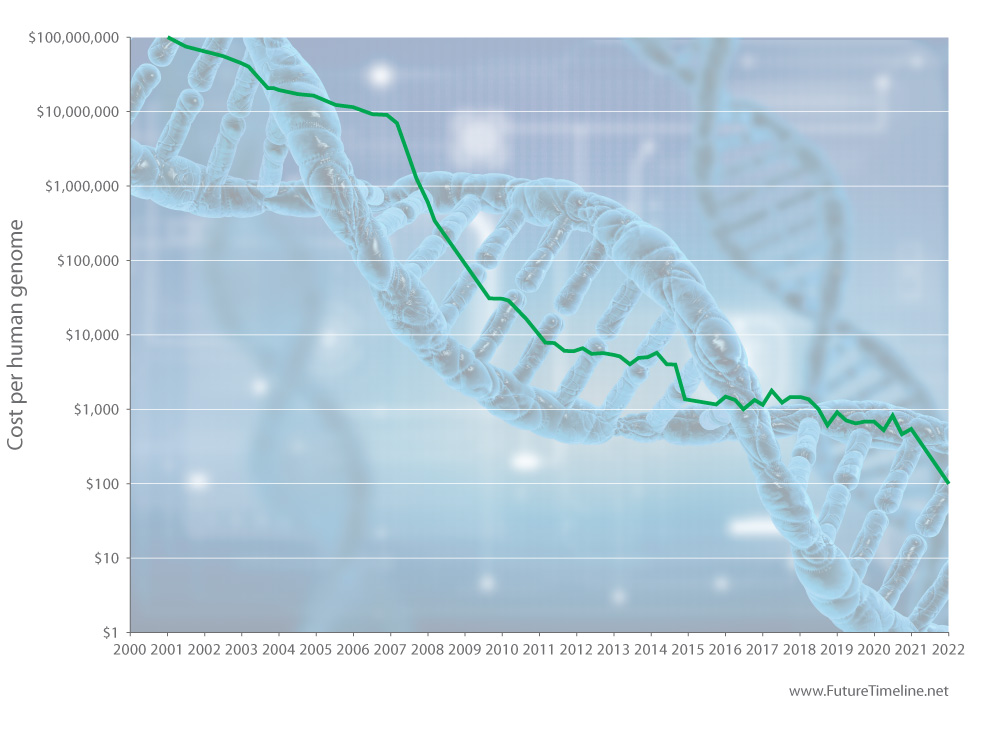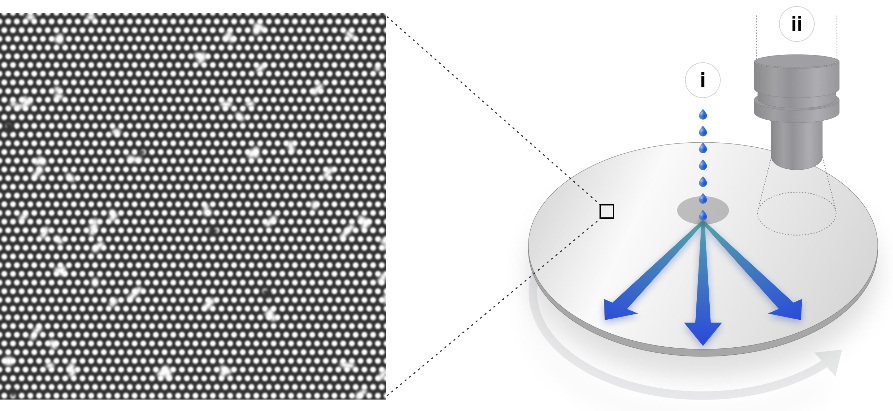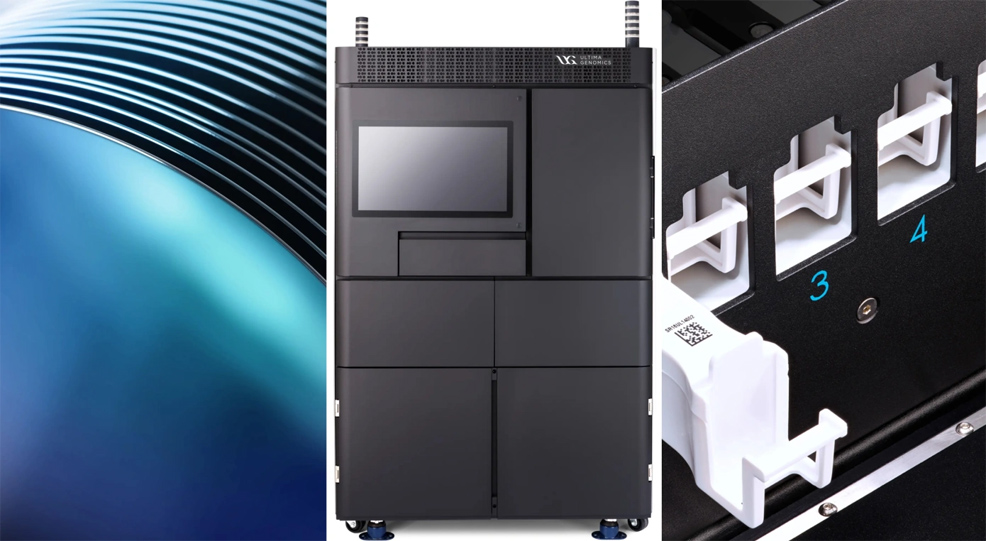
10th June 2022 Whole human genome sequencing for $100 Ultima Genomics, a biotech company based in California, has emerged from stealth mode with a new high-throughput, low-cost sequencing platform that it claims can deliver a $100 genome. When the Human Genome Project began in 1990, it had a projected budget of $3 billion. Some researchers believed it would take centuries to map all 20,000+ genes and to determine the sequence of chemical base pairs making up DNA, though in the end it took 13 years. Since then, genome sequencing has undergone technology and cost improvements at a rate faster than Moore's Law (a long-term trend in the computer industry that involves a doubling of performance every two years). What used to require billions of dollars and many years of work is now several orders of magnitude cheaper and possible in a matter of hours. Companies like 23andMe and Ancestry.com have been offering DNA test kits at the consumer level. These can generate reports relating to a customer's ancestry and genetic predispositions to health-related issues. While most people have opted for tests based on partial (i.e. incomplete) sequencing, the costs are now becoming so low that whole genome sequencing may soon be affordable. Veritas Genetics made headlines in 2016 by breaking the $1,000 barrier and in 2021 the price fell to $562. Now, one company claims to have achieved the major milestone of whole genome sequencing for just $100. Ultima Genomics, emerging from stealth mode, describes its goal as "unleashing a new era in genomics-driven research and healthcare". It has secured around $600 million in backing from leading investors who share this vision.
At the Advances in Genome Biology and Technology (AGBT) conference in Florida this week, a presentation took place of the first scientific results from leading research institutes using the platform for whole-genome sequencing, single-cell sequencing, and cancer epigenetics. This included 200 whole human genomes obtained at the Broad Institute of MIT and Harvard, the company's first early access site. In addition, a four million cell, genome-wide study performed at the Whitehead Institute (part of MIT) demonstrated usability for the platform in large-scale, single-cell studies. Initial clinical evaluation data, as well as Hi-C genome structure data at an "unprecedented resolution" also became public at the AGBT. Biology's complexity and dynamic nature has created a virtually unlimited need for genomic information. Currently, routine adoption of sequencing for research and diagnosis is severely constrained by cost. Over the last five years, Ultima has developed what it calls "a fundamentally new sequencing architecture" to scale beyond conventional approaches, including completely different flow cell engineering, sequencing chemistry, and machine learning.
"DNA is nature's storage media and the instruction set for every living organism, yet with current technologies, we can't access that information at the scale needed to truly understand complex biology," said Gilad Almogy, Ultima Genomics' founder and CEO. "Our architecture is intended for radical scaling – and the $100 genome is merely the first example of what it can deliver. We are committed to continuously drive down the cost of genomic information until it is routinely used in every part of the healthcare system." "Ultima Genomics' architecture will revolutionise sequencing and take what we can do to a whole new level," said Michael Snyder, Director of the Center for Genomics and Personalised Medicine at Stanford University. "The ability to sequence many thousands of genomes and epigenomes will transform diagnostics and disease risk prediction." "The latest advances in biomedical research require an increasingly larger scale of sequencing," said Jonathan Weissman, Professor at the Whitehead Institute. "We have seen the quality of Ultima's sequencing in millions of single cells, and now are initiating even larger experiments that weren't previously feasible." "Scientists and clinicians continuously make trade-offs between the breadth, depth, and frequency of genomic information they collect," said Chief Science Officer of Ultima Genomics, Doron Lipson. "By overcoming the limitations of conventional next-generation sequencing technologies, researchers can now design experiments and clinical assays that were previously impossible."
Comments »
If you enjoyed this article, please consider sharing it:
|









